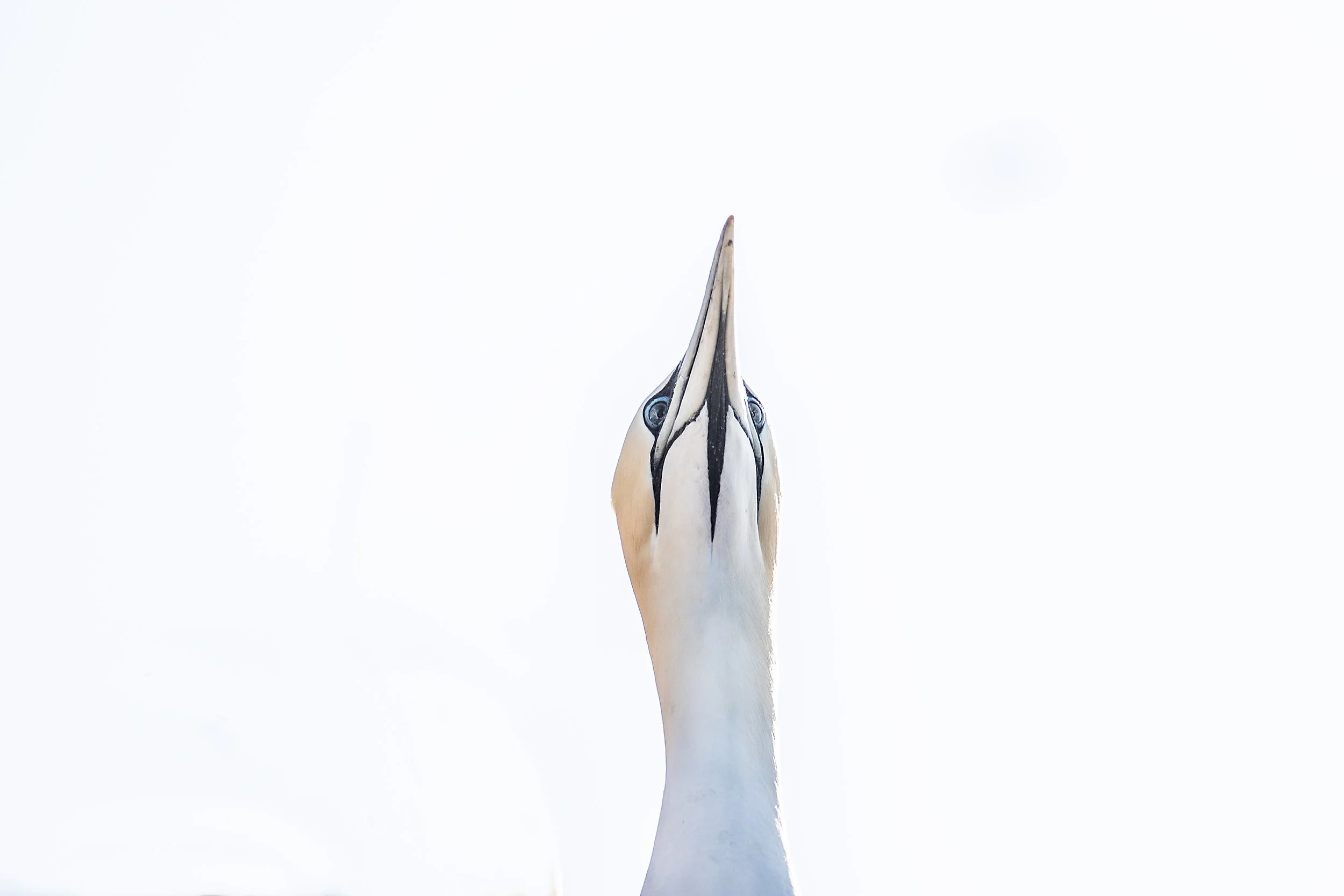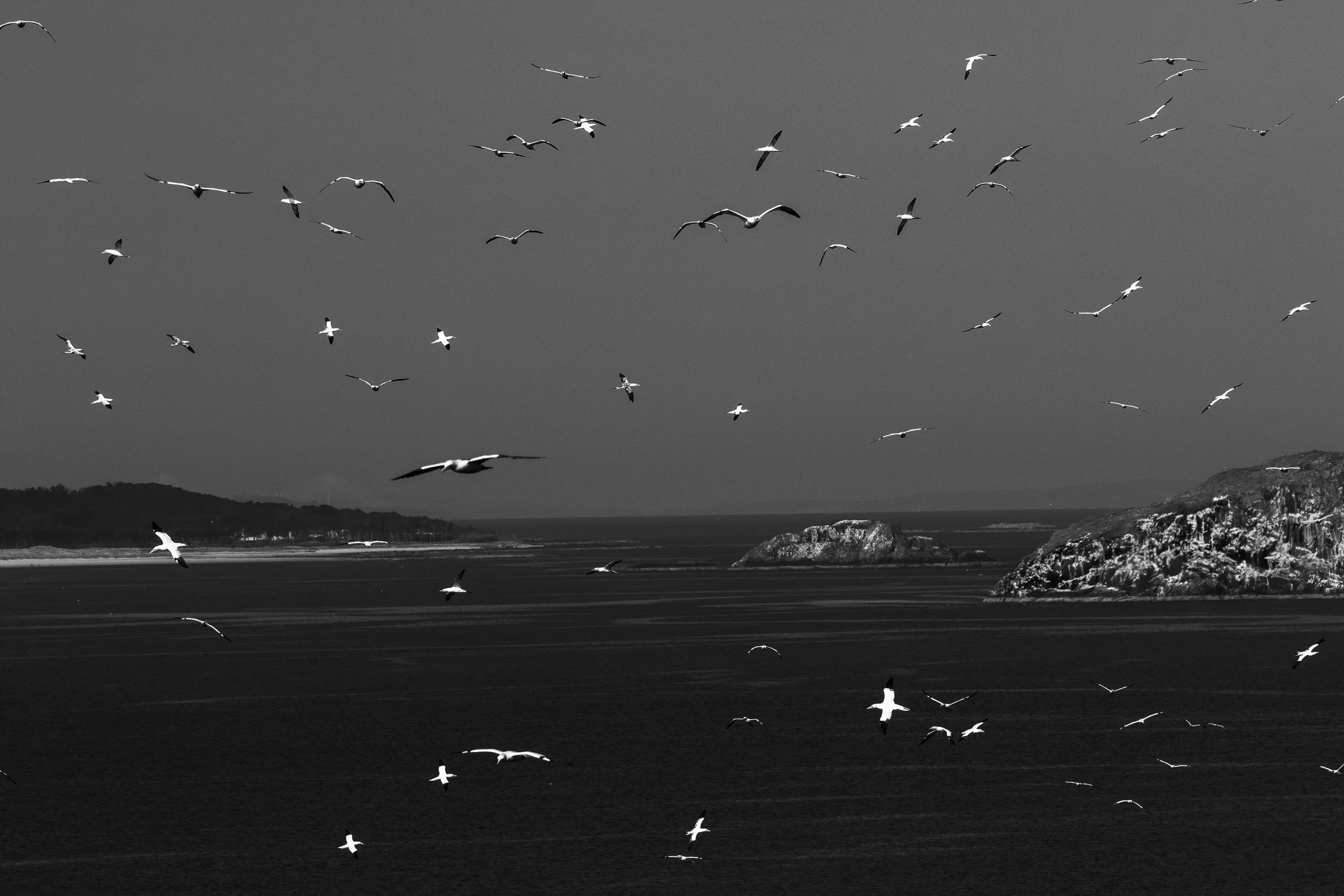Radar Angels
Generative Artwork created from bird flight data.
Inspace Gallery, Artist Residency
Inspired by an unexpected wartime phenomenon where radar technology used during World War II detected migrating birds. This discovery laid the groundwork for radar ornithology, transforming our understanding of bird migration and the intricate connections within our natural world.
The flights of Seabirds that call the Scottish islands home.
Generative art created in collaboration with the RSPB and Ray Interactive, the work explores the intricate and vital role of seabirds as cross-ecosystem species, bridging marine, deep sea, coastal, and terrestrial environments. Radar Angels intertwines art, science, and history, prompting reflection on the delicate balance of our ecosystems
Radar Angels
Background
During World War II, the British military developed radar technology to detect enemy aircraft and ships. However, not all radar echoes came from operational targets. Mysterious echoes, dubbed "angels," perplexed operators. It was eventually discovered that many of these anomalies were caused by migrating birds.
In the early days of radar, signals reflected off solid objects like ships and aircraft, but weaker echoes from other sources remained unexplained. Sir Edward Fennessy, who was responsible for the radar chain, recounted an incident where unexplained radar blips led to heightened alerts. He noted, “no explanation was ever found, and because we were busy fighting a war we spent no time investigating this phenomena.” At a dinner party, he theorized these echoes as "guardian angels," the souls of British soldiers killed in France over the centuries returning to defend their country.
David Lack of the Army Operational Research Group demonstrated that many of these mysterious echoes originated from birds, despite initial skepticism. His observations laid the groundwork for the field of radar ornithology, which emerged in the 1950s.
The Birth of Radar Ornithology
Radar technology revealed the surprising capability of birds to reflect radio waves, mimicking the signals of aircraft. This discovery was proven by George Varley in 1941, when he observed radar echoes that corresponded with sightings of gannets (Morus bassana). Further experiments confirmed that birds were indeed the source of many radar echoes.
During the war, radar operators often noted unexplained signals that moved in ways inconsistent with weather phenomena. These signals, sometimes covering large distances, were later identified as bird migrations. This marked the beginning of using radar to study bird movements, which has since revolutionized our understanding of avian flight, navigation, behavior, and migration.
Modern Application
Today, radar ornithology continues to evolve with advanced technology, providing insights into avian migration patterns and behaviours. This research is crucial for environmental impact assessments and improving flight safety by monitoring bird movements near airports.
‘Radar Angels reflects on the remarkable intersection of military technology and ornithological science. By creating generative art using GPS bird tracking data, this project invites viewers to explore how wartime innovations inadvertently opened new frontiers in the study of wildlife, transforming our understanding of bird migration and contributing to the broader field of ecological research. It also encourages contemplation of the delicate balance of our ecosystems and the intricate connections within the natural world.




